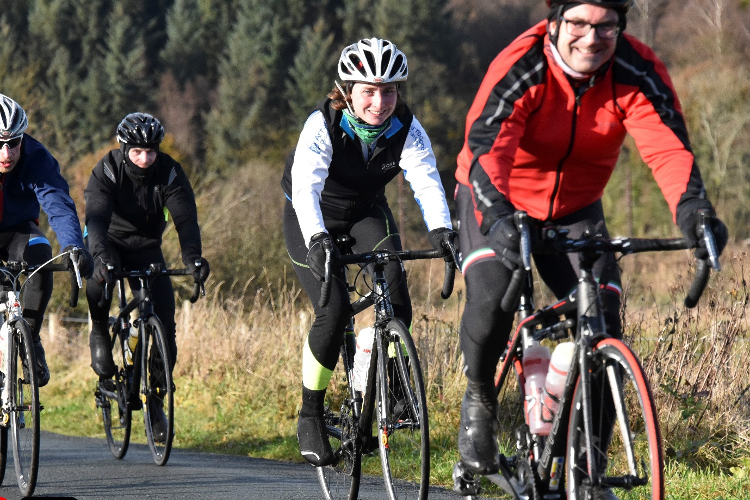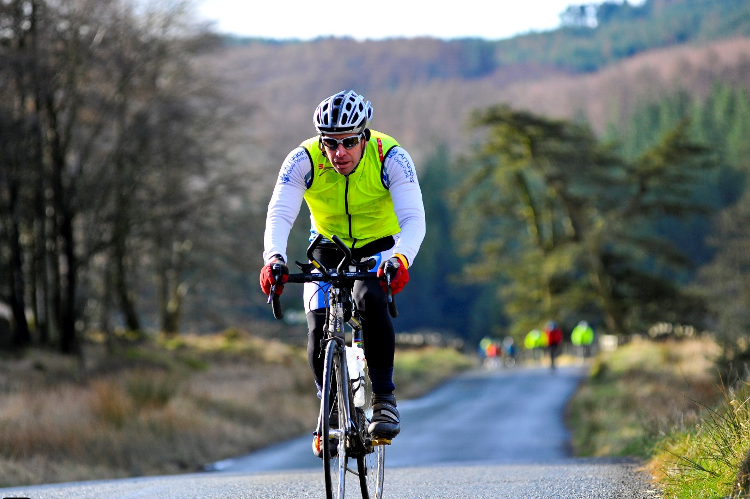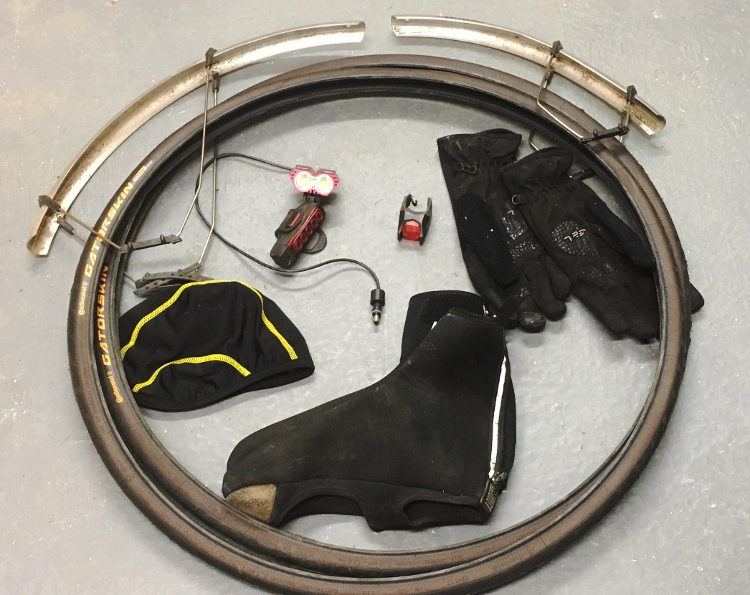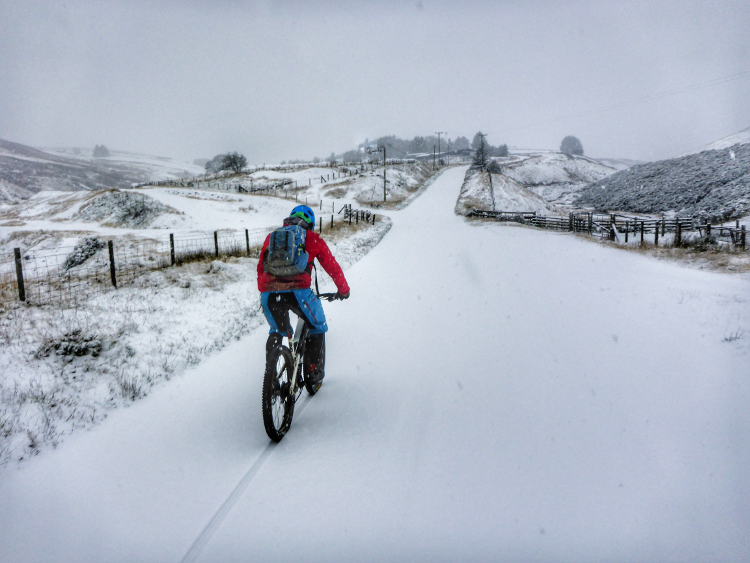by Neil Cooper
Living in the UK means that cycling during the winter can be challenging, mainly due to our weather. Although there has been a boom in virtual riding indoors, for many people, the attraction of cycling is having the ability to explore the great outdoors. Despite the weather, it is still possible to successfully train outside on your bike throughout the winter. If you are able to train safely outdoors, you will be in peak fitness for the spring sportive or a cycling holiday.

To quote Alfred Wainwright, there’s no such thing as bad weather, only unsuitable clothing.
Cycling is no different to walking: the best way to dress for winter cycling is to use layers. A good base wicking layer is essential during cold days. My long sleeve Merino wool base layer is my go to top of choice. Then add as many layers as is necessary. An outer windproof layer will reduce the wind chill and a waterproof to wear or carry is a must have.
A pair of winter cycling tights will keep your legs warm. I prefer the bib version as it helps keep the lower back warm but not everyone feels comfortable in bib tights.
The extremities are susceptible to the cold, so a good warm pair of gloves are a worthy investment. I buy a pair one size too big and then wear a thin glove underneath which I can take off if I get too warm. A good trick is to ensure your gloves/jacket keep your wrists warm. This will keep your blood warm going to your hands.
I like brightly coloured outer clothing with plenty of reflective strips to make sure I am seen when it is dull or dark.

A pair of thermal waterproof overshoes or winter cycle boots, coupled with a nice pair of warm socks, will keep your feet from going numb. On a particularly wet day I take a spare pair of socks in a plastic bag with me to change into mid ride.
A skull cap, made of a Roubaix type material, worn under your bike helmet will keep your head warm and reduce your heat loss.
A neck tube and pair of glasses will finish off your clothing selection perfectly.
It is worth noting that although you may not feel you need to drink and eat as much during a winter ride, it is important to keep hydrated and have plenty of nutrition with you. If you do get cold and start to shiver, the process of shivering can burn up to 400 calories per hour. We all know how we also feel the cold more when we are hungry.
When we breathe we are losing water vapour with every breath, so you need to hydrate.
Although many keen riders will have a different bike to ride during the winter, it isn’t a necessity. A few minor changes and a good bike maintenance routine is all that is needed to ride the same bike all year round.
Firstly, a set of mudguards are a great way of keeping the spray from the road from soaking you and any cycling companions. Mudguards are easy to fit and remove. They vary from small ones just to protect your backside from a soaking to longer ones that will reduce more spray, particularly the spray to any cyclists directly behind you.
The roads tend to be wetter and slippery during the winter so getting some winter tyres with some added grip and puncture resistance is a good investment.
With shorter and darker days, a good set of front and rear lights are a necessity. I always run two rear lights in case one stops working and I am unaware it’s not working. Spare batteries in your pocket are also a good idea.

I am always wary of attaching lights to the top of a bike helmet. Although this might improve the direction for your light, there have been numerous incidents where the light has caused the helmet to fail at the point it is attached which has caused a head injury. My preference is for a light to be attached to the handlebar or stem.
All bikes should have reflectors, so make sure yours are nice and clean.
Although you may feel like a mobile Christmas tree with reflective clothing and lighting, at least it means you are always going to be visible from all angles.
During the winter, there is likely to be salt on the road, which will quickly have a corrosive effect on your bike. Therefore, get into the routine of washing your bike after every ride.
Avoid using a power washer or hose on a powerful setting as this may wash out the lube when you need it most. If you do use a hose, avoid the bottom bracket and wheel hubs as this is where you are likely to remove the grease from the bearings.

A good splash of chain-specific lube will keep your drive chain components working well.
When storing the bike, try to make sure it is dry, or it will rust. A quick wipe down with a chamois leather cloth will dry it off nicely.
Where possible, stick to treated roads. The highways or council website will have details of roads that are treated. Bus routes provide a good indication that a route is treated.
Considering where you can cut your ride short if the weather changes is a sensible precaution.
Avoid riding through puddles whenever possible. Sometimes the puddle may well be hiding a dirty great pothole that is likely to unseat you or damage your bike.
After a couple of minor falls on roads with barely visible ice, I have decided that the risk is too great for road-riding when it is icy or snowing. I avoid the roads and head for the off-road trails on a mountain bike. An off-road mountain bike ride is a great way to keep fit, improve your bike handling and enjoy some stunning scenery.

The best way to keep warm, of course, is to plan your route to pass a nice café to warm up with a hot drink and a cake. After all, cycling is meant to be fun.